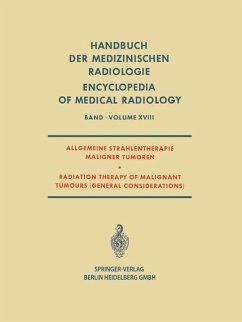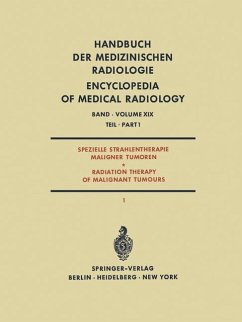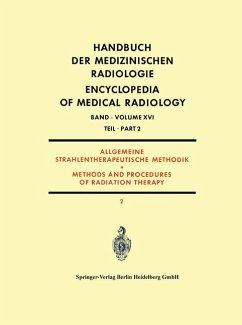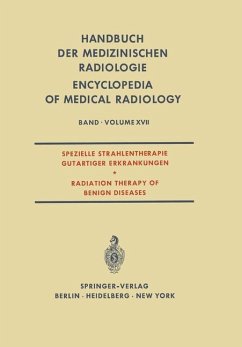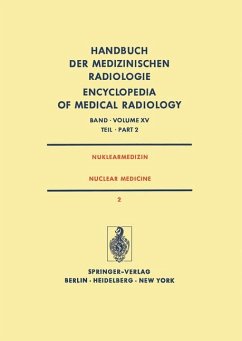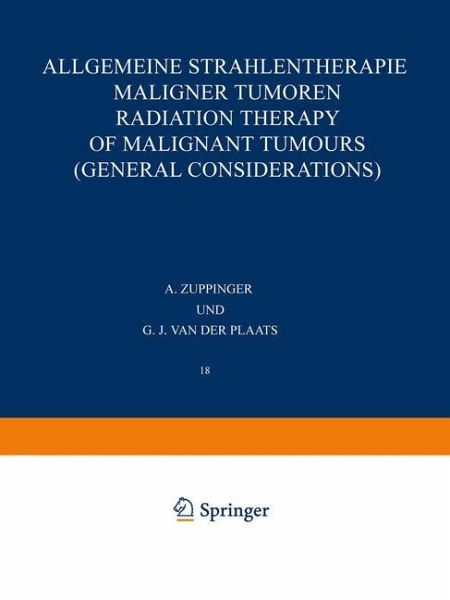
Allgemeine Strahlentherapie Maligner Tumoren / Radiation Therapy of Malignant Tumours (General Considerations)
Versandkostenfrei!
Sofort lieferbar
77,99 €
inkl. MwSt.

PAYBACK Punkte
39 °P sammeln!
Die moderne Strahlentherapie ist eine auBerst komplexe MaBnahme. Es werden therapeutische Eingriffe vorgenommen, die sich sowohl in kurativer als auch palliativer Beziehung sehr niitzlich auswirken konnen, die aber auch, wie jede andere effektive Therapie, nachteilige Folgen haben konnen. Es handelt sich urn die Ausiibung einer arztlichen Kunst, die auf einer ganzen Reihe von Kenntnissen aufbauen muB, ohne welche die Behandlung nur Stiickwerk bleiben und unweigerlich zum Anstieg von MiB erfolgen und sogar zu Schaden fiihren miiBte. Die vornehmlich kurative Behandlung bei den einzelnen Geschwii...
Die moderne Strahlentherapie ist eine auBerst komplexe MaBnahme. Es werden therapeutische Eingriffe vorgenommen, die sich sowohl in kurativer als auch palliativer Beziehung sehr niitzlich auswirken konnen, die aber auch, wie jede andere effektive Therapie, nachteilige Folgen haben konnen. Es handelt sich urn die Ausiibung einer arztlichen Kunst, die auf einer ganzen Reihe von Kenntnissen aufbauen muB, ohne welche die Behandlung nur Stiickwerk bleiben und unweigerlich zum Anstieg von MiB erfolgen und sogar zu Schaden fiihren miiBte. Die vornehmlich kurative Behandlung bei den einzelnen Geschwiilsten wird in Band XIX und XX behandelt. Wie man beispielsweise die allgemeine von der speziellen pathologischen Anatomie trennt, so ist es auch sinnvoll, von einer allgemeinen und speziellen Strahlentherapie zu sprechen. Wir glauben, daB es sowohl niitzlich als auch notwendig ist, die allgemeine Strahlentherapie in einem eigenen Band getrennt zu be arbeiten, weil eine Zusammenfassung nicht nur nicht existiert, sondern bei dem raschen Fortschritt un serer Kenntnisse einem realen Bediirfnis entspricht.





